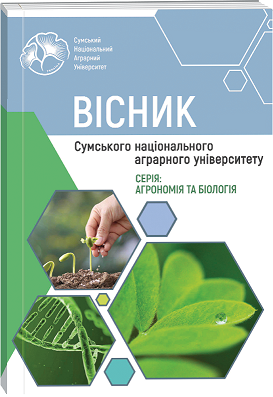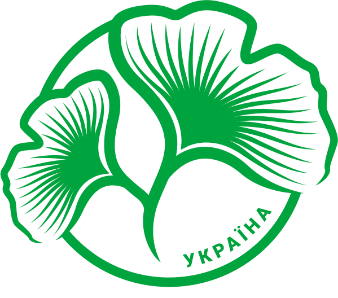ВРОЖАЙНІСТЬ СОРГО ЗЕРНОВОГО ЗАЛЕЖНО ВІД УДОБРЕННЯ ТА СОРТОВИХ ОСОБЛИВОСТЕЙ
Анотація
Сорго зернове (L.) – цінна однорічна культура з відмінною врожайністю. Майбутнє культури залежить від здатності виробників застосовувати оптимальні технології вирощування. Загальною передумовою високої врожайності посіві сорго є максимально ефективне задоволення потреб рослин протягом вегетаційного періоду, тобто використання необхідних хімічних елементів живлення. Врожайність сорго може суттєво зростати за умови адекватного забезпечення поживними речовинами. Управління внесенням добрив впливає не лише на рівень врожайність, але й на якісний склад кінцевої продукції. Забезпечуючи посіви сорго адекватними дозами добрив, можна максимізувати врожайність. Тобто потрібні дослідження щодо вибору оптимальних для зони вирощування сортів сорго та застосування відповідних елементів технологій, зокрема визначення оптимальних доз мінеральних добрив, які можуть забезпечити високий врожай в зоні північно-східного лісостепу що й було метою наших досліджень. Дослідження проводили впродовж 2021–2023 рр. на навчально-науковому полігоні Сумського національного аграрного університету. Повторення досліду – триразове, розміщення ділянок – систематичне. Фактор А – гібрид та сорти сорго зернового: Янкі, Дніпровський 39, Самаран 6. Фактор В – норма внесення добрив: варіант без внесення добрив (фон), Нітроамофос (N16P16K16), (N35P35K35) та (N70P70K70) діючої речовини кг/га вносили відповідно до схеми досліду під передпосівну культивацію Для отримання високого рівня врожайності, оптимальними нормами внесення добрив є N70P70K70 та N35P35K35. Найкращими сортами для зони були гібрид Янкі, який забезпечив максимальну врожайність та сорт Дніпровський 39. Застосування норм добрив N70P70K70 та N35P35K35 підвищило врожай сорго від 2,30 до 6,32 т/га залежно від генотипів. Зі збільшенням норм добрив зростало значення коефіцієнта урожайності та маса посіву. Аналіз наведених вище даних показує, що на формування врожайності найбільший влив мав фактор сортових особливостей рослин сорго зернового (фактор А) : 64%. Суттєву частку часткою впливу склали добрива (фактор В) – 28%. Взаємодія двох факторів була на рівні 5%, 3% впливу забезпечили інші фактори. Найвищий коефіцієнт врожайності визначено для гібриду Янкі та сорту Самаран 6. з середнім значенням коефіцієнта 35–37%. (нормою добрив N35P35K35 та N70P70K70) Для сорту Дніпровський 39 та сорту Самаран 6 максимальний рівень прибавки врожаю відзначено за внесення N35P35K35 – 11,8 кг та 5,52 кг зерна на 1 кг діючої речовини відповідно. Для гібрида Янкі найвищі значення показника становили 11,90 кг зерна на 1 кг діючої речовини з максимальною нормою N70P70K70. Загалом для отримання високого рівня врожайності оптимальними нормами внесення добрив були N70P70K70. та N35P35K35. Урожайність гібрида Янкі та сорту Дніпровський 39 була найвищою в досліді, тому їх можна рекомендувати для вирощування в умовах регіону.
Посилання
2. Ajeigbe, H. A., Akinseye, F.M., Kunihya, A. & Jonah, J. (2018), Productivity and water use efficiency of sorghum [sorghum bicolor (L.) moench] grown under different nitrogen applications in Sudan savanna zone, Nigeria Int’l Journal of Agronomy. doi: 10.1155/2018/7676058
3. Ajeigbe, H. A., Akinseye, F. M., Jonah, J.& Kunihya, A. Sorghum yield and water use under Phosphorus fertilization applications in the Sudan savanna of Nigeria (2018). Glo. Adv. Res. J. Agric. Sci. Global Advanced Research Journal of Agricultural Science, 7(8), 245–257. Access mode: http://garj.org/garjas/home
4. Akram, A., Fatima, M., Ali, S., Jilani, G. & Asghar, R. (2007) Growth, yield and nutrients uptake of sorghum in response to integrated phosphorus and potassium management. Pakistan Journal of Botany, 39, 1083–1087.
5. Alse, U. N., Bhutada, P. O. & Mehtre, S. P. (2019). Effect of time nitrogen fertilizer application on growth and yield of grain sorghum. Int. J. Curr. Microbiol. App. Sci., 8(5), 987–992. doi: 10.20546/ijcmas.2019.805.115
6. Amiri, M., Mojaddam, M., Shokouhfar, A. & Bakhtiarinejad, N. (2014). The effect of different levels and time of nitrogen application on grain yield, some physiological traits and nitrogen use effiency in grain sorghum. Indian J. Fundam. Appl. Life Sci., 4, 223–227.
7. Bayu, W., Rethman, N. F. G., Hammes, P. S., & Alemu, G. (2006). Effects of farmyard manure and inorganic fertilizers on sorghum growth, yield, and nitrogen use in a semi-arid area of Ethiopia. J. Plant Nutr. 29, 391–407.
8. Bollam, S., Romana, K. K., Rayaprolu, L., Vemula, A., Das, R. R., Rathore, A., Gandham, P., Chander, G., Deshpande, S. P. & Gupta, R. (2021) Nitrogen Use Efficiency in Sorghum: Exploring Native Variability for Traits Under Variable N-Regimes. Front Plant Sci., 12, 643192. doi: 10.3389/fpls.2021.643192.
9. Boiko, M. O. (2016). Analiz struktury vrozhaiu hibrydiv sorho zernovoho pry riznykh hustotakh posiviv za dvokh strokiv sivby. Ontohenez – stan problemy ta perspektyvy vyvchennia roslyn v kulturnykh ta pryrodnykh tsenozakh [Analysis of the grain structure structure of grain sorghum hybrids at different crop densities at two sowing dates. Ontogenesis – the state of the problem and prospects for the study of plants in cultural and natural coenoses]: Collection of abstracts of the international conference. Kherson, RVTs «Kolos», 79–80. (in Ukrainian)
10. Buah, S. S. J., Kombiok, J. M. & Abatania, L. N. (2012). Grain sorghum response to NPK fertilizer in the Guinea savanna of Ghana. J. Crop Improv., 26, 101–115. doi: 10.1080/15427528.2011.616625
11. Dembele, J., Gano, B., Kouressy, M., Dembele, L., Doumbia, M., Ganyo, K., Sanogo Sekouba, T., Adama, T., Karim, Vaksmann Michel, Témé Niaba, Diouf, D. & Audebert, A. (2021). Plant density and nitrogen fertilization optimization on sorghum grain yield in Mali. Agron. J., 113, 4705–4720. doi: 10.1002/agj2.20850
12. Desta, G., Amede, T., Gashaw, T., Legesse, G., Agegnehu, G., Mekonnen, K. & Whitbread, A. (2022). Sorghum yield response to NPKS and NPZn nutrients along sorghum-growing landscapes. Experimental Agriculture, 58, E10. doi: 10.1017/S0014479722000072
13. Dovale, J. C., Delima, R. O. & Fritsche-Neto, R. (2012) Breeding for nitrogen use efficiency. in Plant Breeding for Abiotic Stress Tolerance, eds R. Fritsche-Neto and A. Borem (Berlin: Springer), 53–65.
14. Ganyo, K. K., Muller, B., Ndiaye, M., Gaglo, E. K., Guisse, A. & Adam, M. (2019) Defining fertilization strategies for sorghum (Sorghum bicolor (l.) Moench) production under sudano-sahelian conditions: options for late basal fertilizer application. Agronomy, 9, 697. doi: 10.3390/agronomy9110697
15. Getinet, H. & Atinafu, O. (2022) Effect of phosphorus fertilizer rates on grain yield and yield components of sorghum (Sorghum bicolor L.) at Kersa District, Jimma Zone, and South western Ethiopia. J. of Aquac. Fisheries, 6, 049.
16. Gupta, N., Gupta, A. K., Gaur, V. S., & Kumar, A. (2012). Relationship of nitrogen use efficiency with the activities of enzymes involved in nitrogen uptake and assimilation of finger millet genotypes grown under different nitrogen inputs. The Scientific World Journal, 10.
17. Hailu, G. & Kedir, M. (2022) Effect of nitrogen and phosphorus fertilizer rates on yield and yield components sorghum (Sorghum bicolor L. Moench) at Kersa Woreda of Oromia Region. International Journal of Bioorganic Chemistry, 7(1), 23–29. doi: 10.11648/j.ijbc.20220701.14
18. Hasan, S. A., Rabei, S. H., Nada, R. M. & Abogadallah, G. M. (2017) Water use efficiency in the drought-stressed sorghum and maize in relation to expression of aquaporin genes., Biol. Plant, 61, 127–137.
19. Holman, J. D., Obour, A. K. & Mengel, D. B. (2019) Nitrogen application effects on forage sorghum production and nitrate concentration. J. Plant Nutr., 42, 2794–2804.
20. Hospodarenko, H. M., & Klymovych, P. V. (2006). Reaktsiia sorho zernovoho na udobrennia na chornozemi opidzolenomu [Reaction of grain sorghum to fertilizer on podzolic chernozem]. Collection of scientific works of Luhansk NAU, 69, 20–25 (in Ukrainian).
21. Ikanovic, J., Glamoclija, D.J., Maletic, R., Jankovic, S., Tabakovic, M., & Zivanovic, L. J. The genotype traits of forage sorghum, Sudan grass and their interspecies hybrid in the conditions of intensive nutrition. Genetika. 2010, 2, 349–358.
22. Ivanina, V. V., & Pashynska, K. L. (2022). Formation of nutritional balance in grain sorghum crops under different fertilizer systems. Bulletin of Sumy National Agrarian University. The Series: Agronomy and Biology, 47(1), 65–70. doi: 10.32845/agrobio.2022.1.9
23. Kaufman, R. C., Wilson, J. D., Bean, S. R., Presley, D. R., Blanco-Canqui, H. & Mikha, M. (2013). Effect of nitrogen fertilization and cover cropping systems on sorghum grain characteristics. J. Agric. Food Chem. 61, 5715–5719. doi: 10.1021/jf401179n
24. Legesse, H. & Gobeze, L. (2015) Growth and grain yield response of sorghum (Sorghum bicolor L. Moench) varieties to moisture conservation practices and NP Fertilizer at moisture stress area of Amaro, Southern Ethiopia. Ashese Journal of Agricultural Science, 1, 001–005.
25. Mahama, G. Y., Vara Prasad, P. V., Mengel, D. B. & Tesso, T. T. (2014). Influence of nitrogen fertilizer on growth and yield of grain sorghum hybrids and inbred lines. Agron. J. 106, 1623–1630. doi: 10.2134/agronj14.0092
26. Maliarchuk, N. P., Maliarchuk, A. S., Luzhanskyi, I. Yu, Markovska, E. E., & Maliarchuk, V. N. (2019). Vplyv system osnovnoho obrobitku ta udobrennia na humusovyi stan gruntu i produktyvnist sorho zernovoho u sivozmini ta zroshenni [Influence of basic tillage and fertilization systems on soil humus condition and grain sorghum productivity in crop rotation and irrigation]. Bioresources and nature management, 1–2, 98–107 (in Ukrainian). doi: 10.31548/bio2019.01.011
27. Masebo, N. & Menamo, M. (2016) The effect of application of different rate of N-P fertilizers rate on yield and yield components of sorghum (Sorghum Bicolor): Case of Derashe Woreda, Snnpr, Ethiopia. Journal of Natural Sciences Research, 6, 88–94.
28. McHenry, B. M. (2016). Balanced nutrition and crop production practices for the study of grain sorghum nutrient partitioning and closing yield gaps. M.Sc. thesis. Manhattan, KS: Kansas State University.
29. Metodyka derzhavnoho sortovyprobuvannia silskohospodarskykh kultur. Vypusk 2: Zernovi, krupiani ta zernobobovi kultury (2001). Za red. V. V. Volkodava. [Methodology of state variety testing of agricultural crops, 2: Cereal, cereal and leguminous crops]. Alefa, Kyiv, 65 [in Ukrainian].
30. Melaku, N. D., Bayu, W., Ziadat, F. & Strohmeier, S. (2017). Effect of nitrogen fertilizer rate and timing on sorghum productivity Ethiopian highland Vertisols. Arch. Agron. Soil Sci., 64, 480–491. doi: 10.1080/03650340.2017.1362558
31. Ostmeyer, T. J., Bahuguna, R. N., Kirkham, M. B., Bean S. & Jagadish, S. V. K. (2022). Enhancing Sorghum Yield Through Efficient Use of Nitrogen – Challenges and Opportunities. Front Plant Sci., Feb 28;13:845443. doi: 10.3389/fpls.2022.845443.
32. Qi, G., Li, N., Sun, X. S., Wang, D., Ciampitti, I. & Prasad, V. (2016). Overview of Sorghum industrial utilization, in Sorghum: A State of the Art and Future Perspectives, eds I. Ciampitti and V. Prasad (Madison WI: American Society of Agronomy and Crop Science Society of America, Inc.), 463–476. doi: 10.2134/agronmonogr58.c21
33. Rashid, A., Khan, R. U. & Ullah, H. (2008). Influence of nitrogen levels and application methods on yield and quality of Sorghum. Pedosphere 18, 236–241. doi: 10.1016/s1002-0160(08)60012-0
34. Sanders, J. H., Ouendeba, B., Ndoye, A. & Teme, N. (2018) Introducing new technologies and market strategies for sorghum producers in developing countries: the Sahel case W. Rooney (Ed.), Achieving Sustainable Cultivation of Sorghum Volume 2: Sorghum Utilization Around the World, Burleigh Dodds Science Publishing, Cambridge, UK.
35. Sebnie, W. & Mengesha, M. (2018) Response of nitrogen and phosphorus fertilizer rate for sorghum (Sorghum bicolor L. Moench) production in Wag-Lasta area of Ethiopia. Archives of Agriculture and Environmental Science, 3, 180–186.
36. Shibeshi, M. H., Gedamu, M. T. & Fiseha, A. M. (2022). The effects of nitrogen rates on yield, and yield components of improved sorghum varieties in the lower watersheds of Habru District, Northern Ethiopia. Abyssinia Journal of Science and Technology, 7(1), 46–53. Access mode: https://abjol.org.et/index.php/ajst/article/view/452
37. Temeche, D., Getachew, E. & Hailu, G. (2021) Effects of nitrogen fertilizer quantity and time of application on sorghum (Sorghum bicolor (L.) Moench) production in lowland areas of North Shewa, Ethiopia International Journal of Agronomy. doi: 10.1155/2021/3019528
38. van Oosterom, E. J., Borrell, A. K., Chapman, S. C., Broad, I. J. & Hammer, G. L. (2010a). Functional dynamics of the nitrogen balance of sorghum: I. N demand of vegetative plant parts. Field Crops Res., 115, 19–28.
39. Worland, B., Robinson, N., Jordan, D., Schmidt, S. & Godwin, I. (2017). Post-anthesis nitrate uptake is critical to yield and grain protein content in Sorghum bicolor. J. Plant Physiol., 216, 118–124. doi: 10.1016/j.jplph.2017.05.026
40. Yeshchenko, V. O., Kopytko, P. H., Opryshko, V. P. & Kostohryz, P. V. (2005). Osnovy naukovykh doslidzhen v ahronomii [Basic research in agronomy]. Diia, Kyiv, 288 [in Ukrainian].
41. Zhang, S.J., Chaudhry, A.S., Ramdani, D., Osman, A., Guo, X.F., Edwards, G.R. & Long, C. (2016) Chemical composition and in vitro fermentation characteristics of high sugar forage sorghum as an alternative to forage maize for silage making in Tarim Basin, China. J. Integr. Agric. 15, 175–182.

 ISSN
ISSN  ISSN
ISSN 



